
Fibre Optic Converters
Part No.: MPPT-FibreOptic-foCAN(v4.0)
MPPT-FibreOptic-foEthernet
MPPT-FibreOptic-foBroadR(Automotive)
MPPT-FibreOptic-foHDMI
MPPT-FibreOptic-foLIN
MPPT-FibreOptic-foRS232
MPPT-FibreOptic-foUSB
MPPT-FibreOptic-foE-Charger
we offer a variety of different interfaces that convert electrical signals into optical signals and back.
Product Description
Fibre Optic Converters
In complex testing environments it is often needed that electrical signals have to be transmitted into the chamber or out of the chamber to the test equipment.
For that purpose we offer a variety of different interfaces that convert electrical signals into optical signals and back. Such the signal can be transmitted via fibre optics and is immune against electrical fields.
A sophisticated shielding and filtering concept ensures that the interfaces are highly immune against radiation and do not deliver out any significant emission.
In most cases both units are shielded.
foBROADR-REACH-FIBRE OPTIC CONVERTER
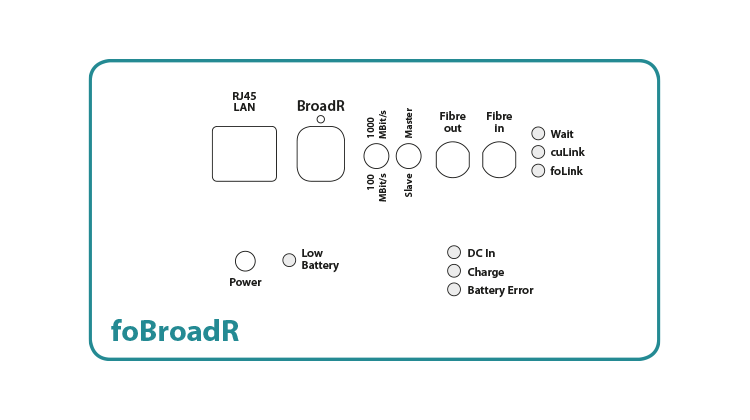
- Autodetect: 100Base-T1, 1000Base-T1
- Up to 200 m
- EMC immunity 200 V/m up to 18 GHz
BroadR-Reach technology is an Ethernet physical layer standard designed for use in automotive connectivity applications.
BroadR-Reach technology allows multiple in-vehicle systems to simultaneously access information over unshielded single twisted pair cable.
The BroadR-Reach standadrd was originally introduced by Broadcom. Besides Broadcom there are also NXP and Marvel chip set and Phy (88Q2212). The Marvel version used in our converters works with both NXP and Broadcom solutions.
In order to facilitate the connection to a PC the converter supports also regular STP connectors.
FEATURES
- RF-Immunity: Antenna radiated 200 V/m, 200 MHz – 18GHz, ISO11452-2, CW, AM, PM Stripline 200 V/m, 10 – 1 GHz, ISO11452-5, CW, AM, PM
- Emission: EMC compliant to CISPR25 Class 5, 150 k – 4 GHz
- Battery (up to 30 h hours operation)
- Compact metal housing
- No galvanic connection between test equipment and measurement instruments
- ACK and network speed indication
- On Request: a special version with 4 x Ethernet ports is available
- Continuous operation with external 12V/2A power supply possible
foCAN LS, HS/FD – FIBRE OPTIC CONVERTER
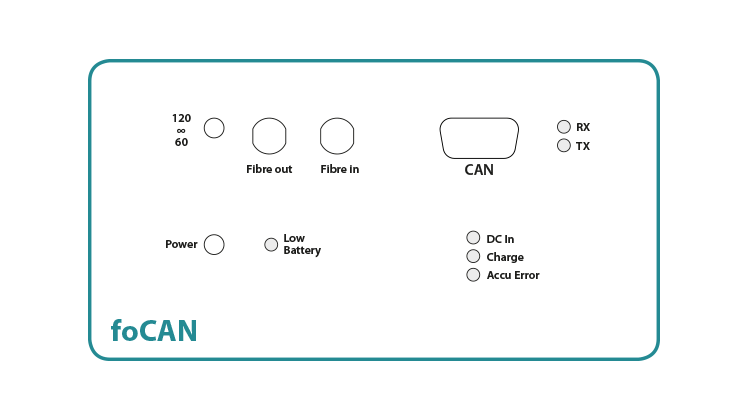
- Low speed ISO 11898-3 up to 125 kbit/s
- High speed ISO11989-2 20–1,000 kbit/s
- Flexible data rate (FD) ISO 11898-2:2016
- Unbuffered
- EMC compliant to CISPR 25, Class 5 -10 dB
- RF-Immunity: Antenna radiated 200 V/m, 200 MHz –18 GHz, ISO11452-2, CW, AM, PM Stripline 600 V/m, 10 – 1 GHz, ISO11452-5, CW, AM, PM
- Emission: EMC compliant to CISPR25 Class 5, 150 k – 4 GHz, Battery version: -10 dB
- Battery (up to 30 h hours operation)
- Compact metal housing
- No galvanic connection between test equipment and measurement instrument
- Max. distance: 10 m at 1000 kbit (longer length at lower speed possible)
- Integrated ESD Protection circuit (for DUT test) according to:
- IEC 61000-4-2; level 4 (ESD) > 15 kV (air); > 8 kV (contact)
- MIL-STD-883; class 3 (human body model) > 4 kV
- Continuous operation with external 12V/2A power supply possible
foCarCharger – FOR CAR CHARGING STATIONS
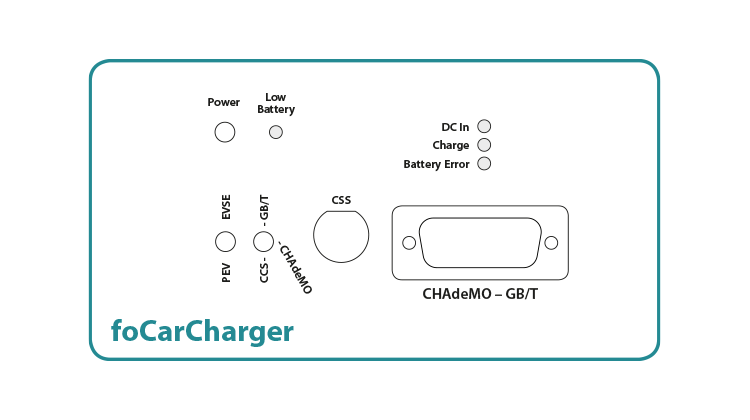
- Test E-vehicles during the charging process
- Data communication between EV and EVSE via fibre optic
- Low emmission
- Supports all major standards: CCS2, CHAdeMO, GB/T
The growing market of e-mobility demands certification of the cars and the corresponding charging stations. As the lines for power and data communication are combined in one cable, the cables needs to be split up. The cables are not supplied by Audivo. The lines then need to be connected to a terminal block inside the enclosure.
The fibre optic converters for the high frequency data lines are located in a special shielded box within the protective enclosure.
The powerlines need to be fed via appropriate filters, whereas the data lines are converted to fibre optic signals.
As Powerline, Control Pilot signal (PWM) and CAN bus are available, the converter can be used for AC and DC charging.
The versatile concept of the PONTIS EMC converter may be used with most international standards.
Both sides (car and EVSE) are shielded and may be used inside the EMC chamber.
As some standards are still in draft status, the exact standard(s) required need(s) to be specified by customer.
FEATURES:
- Shielded transmission for car charging stations
- Data and power are split up
- Data transmission via fibre optics
- For AC and DC charging
- Most international standards supported
- RF-immunity 200 V/m up to 18 GHz
foETHERNET – FIBRE OPTIC CONVERTER
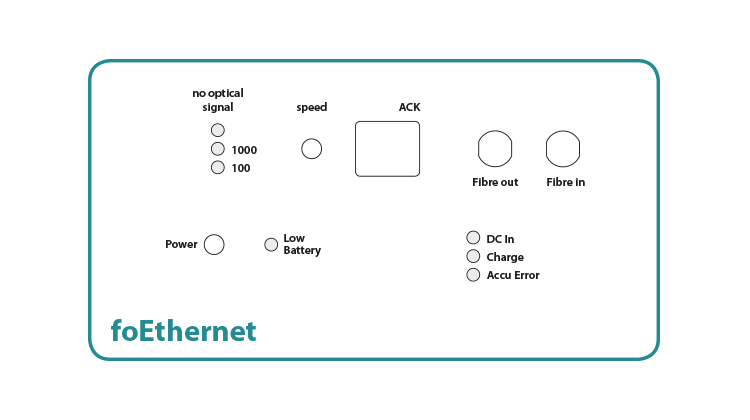
- Autodetect: 10Base-TX, 100Base-TX, 1000Base-T
- > 100 m due to fibre optic cables
- 4 x port version available on request
- EMC compliant to CISPR 25, Class5
FEATURES:
- RF-Immunity: Antenna radiated 200 V/m, 200 MHz – 18GHz, ISO11452-2, CW, AM, PM Stripline 200 V/m, 10 – 1 GHz, ISO11452-5, CW, AM, PM
- Emission: EMC compliant to CISPR25 Class 5, 150 k – 4 GHz
- Battery (up to 30 h hours operation)
- Compact metal housing
- No galvanic connection between test equipment and measurement instruments
- ACK and network speed indication
- Battery version: fast charge, long operation, also for 1 GBit/s
- On Request: a special version with 4 x Ethernet ports is available
- Continuous operation with external 12V/2A power supply possible
foHDMI – FIBRE OPTIC CONVERTER
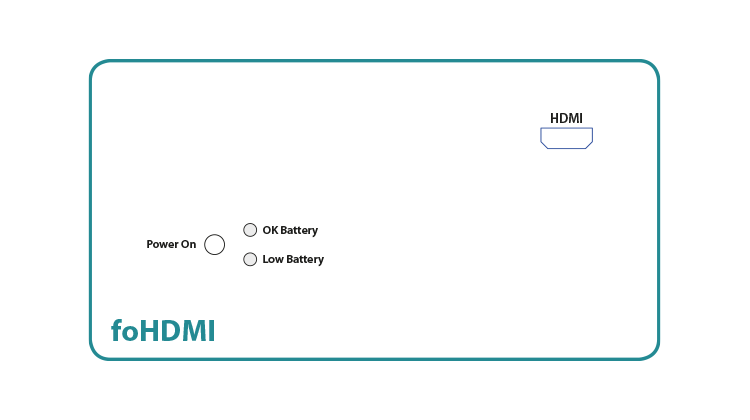
- Full HD 1080p, uncompressed
- Unidirectional, 10.2 GBit/s High speed duplex (up to HDMI 1.2)
- Max. distance 200 m
- EMC compliant to CISPR 25, Class5
- RF-Immunity: Antenna radiated 200 V/m, 200MHz – 18GHz, ISO11452-2, CW, AM, PM Stripline 200 V/m, 10 – 1 GHz, ISO11452-5, CW, AM, PM
- Emission: EMC compliant to CISPR25 Class 5, 150 k – 4 GHz
- Battery (up to 30 h hours operation)
- Compact metal housing
- No galvanic connection between test equipment and measurement instruments
- Max. HD resolution 1920 x 1080, up to 60 Hz
- Unidirectional signal transfer (HDMI up to version 1.2)
- Continuous operation with external 12V/2A power supply possible
foLIN – FIBRE OPTIC CONVERTER
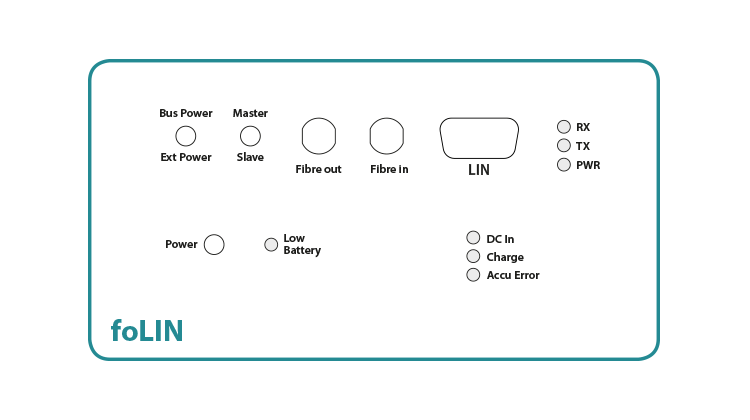
- 1 – 20 kbit/s
- Switchable terminator
- Switchable power: from LIN-bus
- Max. distance : 100 m
- EMC compliant to CISPR 25, Class5
FEATURES:
- RF-Immunity: Antenna radiated 200 V/m, 200 MHz –18 GHz, ISO11452-2, CW, AM, PM Stripline 200 V/m, 10 – 1 GHz, ISO11452-5, CW, AM, PM
- Emission: EMC compliant to CISPR25 Class 5, 150 k – 4 GHz
- Battery (up to 30 h hours operation)
- Compact metal housing
- No galvanic connection between test equipment and measurement instruments
- Build in battery supply, foLIN can be self-sustaining foLIN can be also completely powered by DUT/LIN bus
- Master/Slave termination switchable (1 kR and Diode in series)
- Protocol transparent, bus errors are also transmitted
- Continuous operation with external 12V/2A power supply possible
foRS232 / RS485 – FIBRE OPTIC CONVERTER

- 2 ports with full handshake (3 in, 3 out) or
- 2 * 3 channels w/o handshake
- Bidirectional, up to 116 kBaud
- max distance >500 m
- EMC compliant to CISPR 25, Class5
FEATURES:
- RF-Immunity: works appropriate, no test report
- Emission: EMC compliant to CISPR25 Class 5, 150 k – 4 GHz
- Battery (up to 30 h hours operation)
- Compact metal housing
- No galvanic connection between test equipment and measurement instruments
- Continuous operation with external 12V/2A power supply possible
foUSB – FIBRE OPTIC CONVERTER
.jpg)
- High speed, full speed, low speed
- USB 3.0 Gen 1 data rate up to 5 Gbps
- Supports all USB 3.1, 2.0, 1.1 devices
- Up to 500 m, depends on No of Patches
- Immunity up to 200/m
- RF-Immunity: works appropriate, no test report
- Very low emission 150 k – 4 GHz
- Compact metal housing
- No galvanic connection between test equipment and measurement instruments